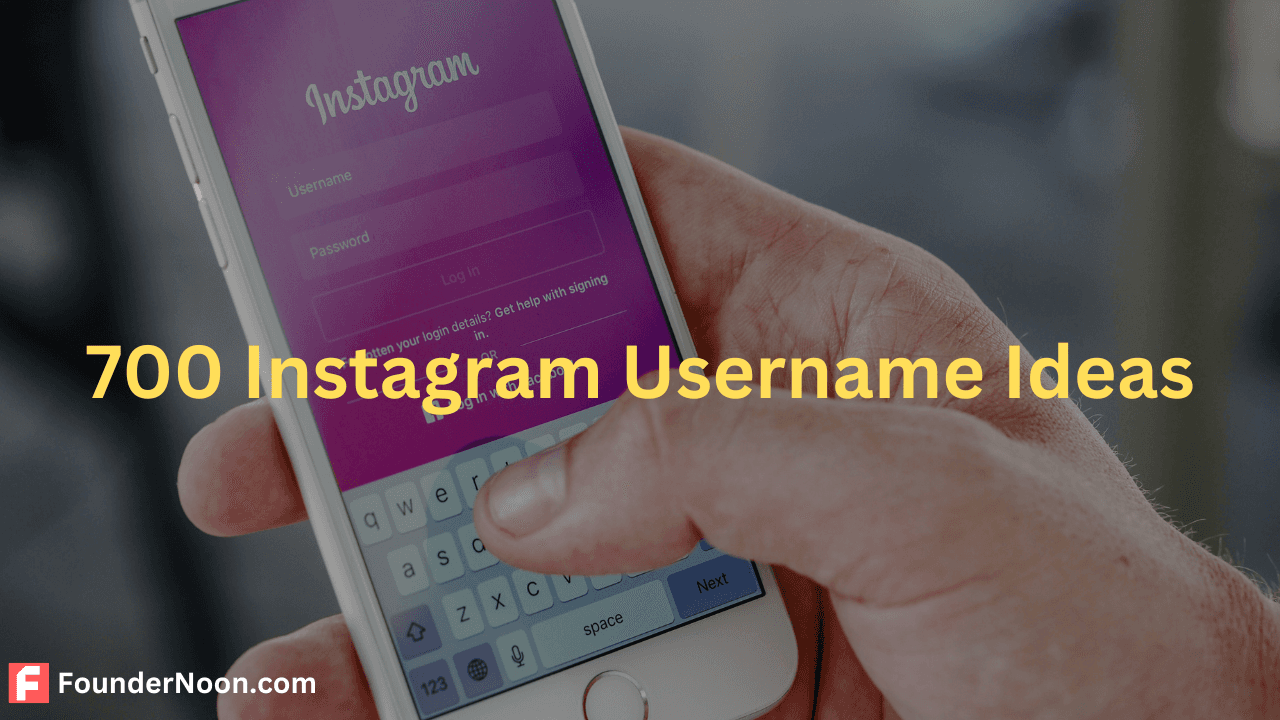How to Launch a Productized Service Business in 7 Days: A Beginner’s Guide
How to Launch a Productized Service Business in 7 Days: A Beginner’s Guide



Introduction
Introduction
You want to start a business but don’t have a ton of money. Or any money.
I get it. But the good news is, you can still launch a productized service business in just 7 days—with zero dollars in your pocket. No fancy tools, no investors, and no complicated jargon. Just your skills, a bit of time, and some hustle.
Let’s break it down, day by day.
You want to start a business but don’t have a ton of money. Or any money.
I get it. But the good news is, you can still launch a productized service business in just 7 days—with zero dollars in your pocket. No fancy tools, no investors, and no complicated jargon. Just your skills, a bit of time, and some hustle.
Let’s break it down, day by day.
Contents
Boost your business visibility to thousands of engaged readers!
Get Featured on 100+ pages across the FounderNoon website.
One month stretch ⇢ $100
Three-month stretch ⇢ $250
Boost your business visibility to thousands of engaged readers!
Get Featured on 100+ pages across the FounderNoon website.
One month stretch ⇢ $100
Three-month stretch ⇢ $250
Contents
Day 1: Choose Your Service Niche
Day 1: Choose Your Service Niche
First things first—you need to pick a niche. This is crucial because a productized service works best when it’s focused on solving one specific problem. The more targeted you are, the easier it is to sell.
How to Pick the Right Niche
Start with what you already know. Maybe you’re good at designing logos, writing copy, or organizing people’s inboxes. Whatever it is, choose a skill you can turn into a repeatable service.
A productized service is all about packaging what you do into something clients can buy off the shelf—like buying a coffee. They know exactly what they’re getting, and you know exactly what you’re delivering.
Examples of Simple Niches:
Website Audits: “I’ll audit your website and give you 3 actionable tips to improve conversions.”
Email Copywriting: “I’ll write a high-converting email for your next launch.”
Podcast Editing: “I’ll edit your podcast episodes and deliver them in 48 hours.”
You don’t need to reinvent the wheel. Just solve a problem people are willing to pay for, and you’re good to go.
First things first—you need to pick a niche. This is crucial because a productized service works best when it’s focused on solving one specific problem. The more targeted you are, the easier it is to sell.
How to Pick the Right Niche
Start with what you already know. Maybe you’re good at designing logos, writing copy, or organizing people’s inboxes. Whatever it is, choose a skill you can turn into a repeatable service.
A productized service is all about packaging what you do into something clients can buy off the shelf—like buying a coffee. They know exactly what they’re getting, and you know exactly what you’re delivering.
Examples of Simple Niches:
Website Audits: “I’ll audit your website and give you 3 actionable tips to improve conversions.”
Email Copywriting: “I’ll write a high-converting email for your next launch.”
Podcast Editing: “I’ll edit your podcast episodes and deliver them in 48 hours.”
You don’t need to reinvent the wheel. Just solve a problem people are willing to pay for, and you’re good to go.
Day 2: Define Your Offer and Package
Day 2: Define Your Offer and Package
Now that you’ve got your niche, it’s time to turn it into a service people can buy.
Create a Repeatable Offer
Your service needs to be simple, scalable, and repeatable. Instead of offering “whatever the client needs,” you’re creating a clear offer with a defined outcome.
Example:
Let’s say you’re in the website audit niche. Instead of saying, “I’ll improve your website,” get specific. A productized service might be: “I’ll audit your homepage and give you 3 improvements to increase conversions in 48 hours.”
What Should Be in Your Offer?
Deliverables: What exactly will you provide? (e.g., a video review, a PDF report).
Turnaround Time: How fast will they get the service? (e.g., within 48 hours).
Pricing: You don’t need to overcomplicate pricing at the start. Pick one flat rate (e.g., $100 per website audit) and keep it simple.
Your goal is to make your service as clear as possible so the client doesn’t have to think. They know what they’re getting, and you know what you’re delivering.
Now that you’ve got your niche, it’s time to turn it into a service people can buy.
Create a Repeatable Offer
Your service needs to be simple, scalable, and repeatable. Instead of offering “whatever the client needs,” you’re creating a clear offer with a defined outcome.
Example:
Let’s say you’re in the website audit niche. Instead of saying, “I’ll improve your website,” get specific. A productized service might be: “I’ll audit your homepage and give you 3 improvements to increase conversions in 48 hours.”
What Should Be in Your Offer?
Deliverables: What exactly will you provide? (e.g., a video review, a PDF report).
Turnaround Time: How fast will they get the service? (e.g., within 48 hours).
Pricing: You don’t need to overcomplicate pricing at the start. Pick one flat rate (e.g., $100 per website audit) and keep it simple.
Your goal is to make your service as clear as possible so the client doesn’t have to think. They know what they’re getting, and you know what you’re delivering.
Day 3: Build Your MVP (Minimal Viable Product)
Day 3: Build Your MVP (Minimal Viable Product)
You don’t need a fancy website to start. In fact, all you need is a basic landing page.
How to Set Up Your Landing Page for Free
Use free or low-cost tools like Carrd, Wix, or Framer to build a simple landing page. It doesn’t have to be perfect—it just needs to explain what you’re offering and how to contact you.
Here’s what you should include on your landing page:
Headline: Be crystal clear about what you do. Example: “Get a Website Audit with 3 Actionable Tips to Increase Conversions.”
Subheadline: Explain how it benefits them. Example: “Delivered in 48 hours, with specific advice you can implement today.”
Call-to-action: Use a strong CTA like, “Book your audit now” or “Contact me to get started.”
If you’ve got testimonials or reviews (even if they’re from past freelance clients), pop them on your page for social proof.
You don’t need a fancy website to start. In fact, all you need is a basic landing page.
How to Set Up Your Landing Page for Free
Use free or low-cost tools like Carrd, Wix, or Framer to build a simple landing page. It doesn’t have to be perfect—it just needs to explain what you’re offering and how to contact you.
Here’s what you should include on your landing page:
Headline: Be crystal clear about what you do. Example: “Get a Website Audit with 3 Actionable Tips to Increase Conversions.”
Subheadline: Explain how it benefits them. Example: “Delivered in 48 hours, with specific advice you can implement today.”
Call-to-action: Use a strong CTA like, “Book your audit now” or “Contact me to get started.”
If you’ve got testimonials or reviews (even if they’re from past freelance clients), pop them on your page for social proof.
Day 4: Find Your First Customers
Day 4: Find Your First Customers
With your offer ready and your landing page live, it’s time to hustle. Don’t expect customers to magically find you—you’ve got to go out and get them.
Leverage Free Marketing Channels
Since you’re starting on a shoestring budget, focus on organic outreach. No need for paid ads at this stage.
Here’s where you can start:
Your Network: Post about your new service on your personal social media accounts (LinkedIn, Facebook, Twitter). You’d be surprised how many people in your circle might be interested or know someone who is.
Relevant Groups: Join Facebook Groups, Reddit threads, or online communities where your target customers hang out. Drop a helpful comment or two, and mention your service without sounding too salesy. Provide value in these groups.
Cold Outreach: Find small businesses or freelancers who could benefit from your service, and reach out directly. Keep it personal and offer something valuable in your pitch.
If you want to gain some early traction, consider offering your service at a discount or even for free to a few initial clients in exchange for feedback or testimonials.
With your offer ready and your landing page live, it’s time to hustle. Don’t expect customers to magically find you—you’ve got to go out and get them.
Leverage Free Marketing Channels
Since you’re starting on a shoestring budget, focus on organic outreach. No need for paid ads at this stage.
Here’s where you can start:
Your Network: Post about your new service on your personal social media accounts (LinkedIn, Facebook, Twitter). You’d be surprised how many people in your circle might be interested or know someone who is.
Relevant Groups: Join Facebook Groups, Reddit threads, or online communities where your target customers hang out. Drop a helpful comment or two, and mention your service without sounding too salesy. Provide value in these groups.
Cold Outreach: Find small businesses or freelancers who could benefit from your service, and reach out directly. Keep it personal and offer something valuable in your pitch.
If you want to gain some early traction, consider offering your service at a discount or even for free to a few initial clients in exchange for feedback or testimonials.

















2,678+ people enjoy it
➤ Every week, we dig up stories of how regular people started and grew their businesses—
➤ Plus the marketing hacks that won them customers.
➤ Then, we share those insights with you.
➤ Every week, we dig up stories of how regular people started and grew their businesses—
➤ Plus the marketing hacks that won them customers.
➤ Then, we share those insights with you.
Day 5: Deliver Your First Service
Day 5: Deliver Your First Service
You’ve landed your first client—congrats! Now it’s time to deliver. And not just deliver, but overdeliver.
How to Overdeliver on Value
Even though you’ve got a clear package, that doesn’t mean you can’t add a little extra. For example, if you promised 3 website improvements, throw in a bonus suggestion or two. Small details like this create an amazing experience for your client and often lead to referrals and repeat business.
Use free tools like Loom to create a quick video review or Google Docs to deliver your audit. The delivery format doesn’t have to be fancy—just make sure it’s easy for the client to access and understand.
Document your process too. By writing down how you deliver your service, you’ll be able to replicate it without having to start from scratch each time.
You’ve landed your first client—congrats! Now it’s time to deliver. And not just deliver, but overdeliver.
How to Overdeliver on Value
Even though you’ve got a clear package, that doesn’t mean you can’t add a little extra. For example, if you promised 3 website improvements, throw in a bonus suggestion or two. Small details like this create an amazing experience for your client and often lead to referrals and repeat business.
Use free tools like Loom to create a quick video review or Google Docs to deliver your audit. The delivery format doesn’t have to be fancy—just make sure it’s easy for the client to access and understand.
Document your process too. By writing down how you deliver your service, you’ll be able to replicate it without having to start from scratch each time.
Day 6: Collect Testimonials and Refine Your Offer
Day 6: Collect Testimonials and Refine Your Offer
Once you’ve delivered your service, it’s time to ask for feedback.
Why Testimonials Matter
Social proof is everything. When potential clients see that others have used and loved your service, they’re more likely to trust you. Reach out to your clients and ask for a quick testimonial. Most people are happy to help if you’ve delivered great value.
And don’t forget to review your own performance. Did the client love something specific about your service? Was there a common piece of feedback? Use this info to tweak your offer and make it even better for the next round of customers.
Senja, is a free testimonial tool. — Collect testimonials from anywhere on the internet.
Once you’ve delivered your service, it’s time to ask for feedback.
Why Testimonials Matter
Social proof is everything. When potential clients see that others have used and loved your service, they’re more likely to trust you. Reach out to your clients and ask for a quick testimonial. Most people are happy to help if you’ve delivered great value.
And don’t forget to review your own performance. Did the client love something specific about your service? Was there a common piece of feedback? Use this info to tweak your offer and make it even better for the next round of customers.
Senja, is a free testimonial tool. — Collect testimonials from anywhere on the internet.
Day 7: Automate and Scale Your Process
Day 7: Automate and Scale Your Process
Now that you’ve delivered your first service and collected feedback, it’s time to think about scaling.
Automate What You Can
Automation is your best friend in a productized service business. The more tasks you can automate, the more time you’ll have to focus on delivering great work (and eventually scaling).
Here’s how to automate without spending a ton:
Scheduling: Use Calendly or Google Calendar to set up appointments and manage bookings automatically.
Payments: Set up a payment system with Stripe or PayPal for easy transactions.
Client Communication: Create templates for onboarding emails or delivery updates.
Once you’ve got your basic process locked down, think about how you can take on more clients. Maybe you raise your prices, or maybe you hire a virtual assistant to help with administrative tasks.
Now that you’ve delivered your first service and collected feedback, it’s time to think about scaling.
Automate What You Can
Automation is your best friend in a productized service business. The more tasks you can automate, the more time you’ll have to focus on delivering great work (and eventually scaling).
Here’s how to automate without spending a ton:
Scheduling: Use Calendly or Google Calendar to set up appointments and manage bookings automatically.
Payments: Set up a payment system with Stripe or PayPal for easy transactions.
Client Communication: Create templates for onboarding emails or delivery updates.
Once you’ve got your basic process locked down, think about how you can take on more clients. Maybe you raise your prices, or maybe you hire a virtual assistant to help with administrative tasks.
Conclusion
Conclusion
Starting a productized service business in 7 days is totally doable—even with no money. All you need is a clear service, a basic landing page, and some hustle. The beauty of this model is that you can scale it over time, add automation, and eventually turn it into a highly profitable business.
Now that you’ve got the roadmap, what are you waiting for? Pick your niche, create your offer, and get out there!
Starting a productized service business in 7 days is totally doable—even with no money. All you need is a clear service, a basic landing page, and some hustle. The beauty of this model is that you can scale it over time, add automation, and eventually turn it into a highly profitable business.
Now that you’ve got the roadmap, what are you waiting for? Pick your niche, create your offer, and get out there!
Like this?
Like this?
Do me a favor and pass this on to a friend or share on X/reddit? It'll take just 20 seconds—this one took me about 8 hours to write 🫠
P.S. I’ve got a weekly newsletter where I share stories about founders who have started successful online businesses, growth strategies, and tips to start/grow your own business. I would love for you to join😊
Do me a favor and pass this on to a friend or share on X/reddit? It'll take just 20 seconds—this one took me about 8 hours to write 🫠
P.S. I’ve got a weekly newsletter where I share stories about founders who have started successful online businesses, growth strategies, and tips to start/grow your own business. I would love for you to join😊






